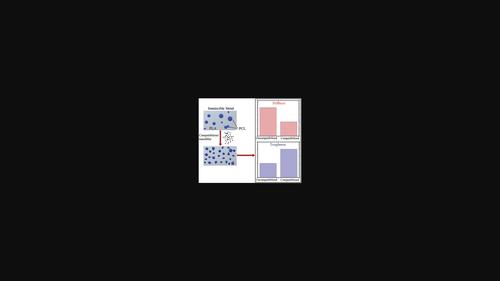当前位置:
X-MOL 学术
›
Macromol. Mater. Eng.
›
论文详情
Our official English website, www.x-mol.net, welcomes your feedback! (Note: you will need to create a separate account there.)
Morphological Characteristics, Properties, and Applications of Polylactide/Poly(ε‐caprolactone) Blends and Their Composites—A Review
Macromolecular Materials and Engineering ( IF 3.9 ) Pub Date : 2024-03-24 , DOI: 10.1002/mame.202400056 Karabo Innocent Matumba 1, 2 , Teboho Clement Mokhena 3 , Vincent Ojijo 1 , Emmanuel Rotimi Sadiku 2 , Suprakas Sinha Ray 1, 4
Macromolecular Materials and Engineering ( IF 3.9 ) Pub Date : 2024-03-24 , DOI: 10.1002/mame.202400056 Karabo Innocent Matumba 1, 2 , Teboho Clement Mokhena 3 , Vincent Ojijo 1 , Emmanuel Rotimi Sadiku 2 , Suprakas Sinha Ray 1, 4
Affiliation

|
Over the past years, poly(lactic acid) or polylactide (PLA) is commonly researched as a possible replacement for traditional fossil‐based polymers because of its compostability, biocompatibility, and high mechanical properties. PLA has a variety of applications in packaging, biomedical, and structural. However, PLA has limitations, such as high brittleness, low thermal stability, and a slow crystallization rate, which limits the wide range of applications. To overcome these limitations, the literature reports that blending PLA with other polymers, such as poly(ε‐caprolactone) (PCL), is an economically viable approach. Although blending PLA with PCL is considered a feasible approach, the blend system still suffers from immiscibility, depending on the blend composition. This review aims to highlight recent developments from 2014 to date on the processing of PLA/PCL blends, including their composites, with a primary focus on morphological characteristics and mechanical and thermal properties, including their potential applications in various sectors.
中文翻译:

聚丙交酯/聚(ε-己内酯)共混物及其复合材料的形态特征、性能和应用综述
在过去的几年里,聚乳酸或聚丙交酯(PLA)因其可堆肥性、生物相容性和高机械性能而被普遍研究为传统化石聚合物的可能替代品。 PLA 在包装、生物医学和结构领域有多种应用。然而,PLA存在脆性高、热稳定性差、结晶速率慢等局限性,限制了其广泛的应用。为了克服这些限制,文献报道将 PLA 与其他聚合物(例如聚(ε-己内酯)(PCL))共混是一种经济上可行的方法。尽管将 PLA 与 PCL 共混被认为是一种可行的方法,但共混系统仍然存在不混溶问题,具体取决于共混成分。本综述旨在重点介绍 2014 年至今 PLA/PCL 共混物(包括其复合材料)加工的最新进展,主要关注形态特征以及机械和热性能,包括它们在各个领域的潜在应用。
更新日期:2024-03-24
中文翻译:

聚丙交酯/聚(ε-己内酯)共混物及其复合材料的形态特征、性能和应用综述
在过去的几年里,聚乳酸或聚丙交酯(PLA)因其可堆肥性、生物相容性和高机械性能而被普遍研究为传统化石聚合物的可能替代品。 PLA 在包装、生物医学和结构领域有多种应用。然而,PLA存在脆性高、热稳定性差、结晶速率慢等局限性,限制了其广泛的应用。为了克服这些限制,文献报道将 PLA 与其他聚合物(例如聚(ε-己内酯)(PCL))共混是一种经济上可行的方法。尽管将 PLA 与 PCL 共混被认为是一种可行的方法,但共混系统仍然存在不混溶问题,具体取决于共混成分。本综述旨在重点介绍 2014 年至今 PLA/PCL 共混物(包括其复合材料)加工的最新进展,主要关注形态特征以及机械和热性能,包括它们在各个领域的潜在应用。



























 京公网安备 11010802027423号
京公网安备 11010802027423号